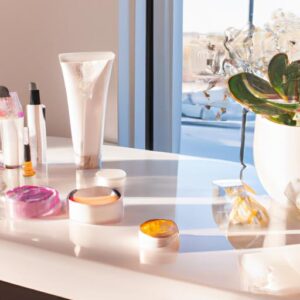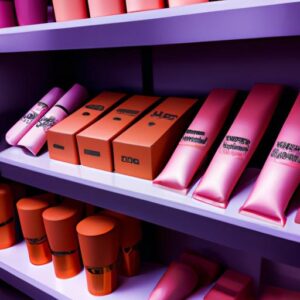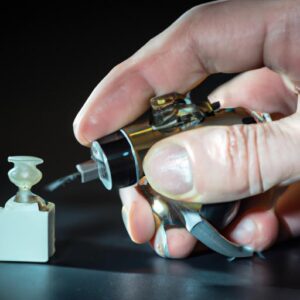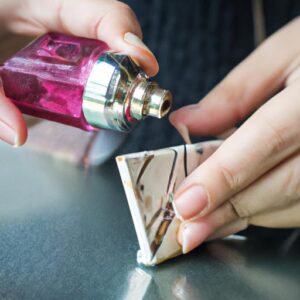Introduction
In the realm of beauty products, the term “sodium” often lurks in ingredient lists, quietly playing a role in our skincare routines. But what exactly is sodium doing in these products, and why should we pay attention to its presence?
Sodium, a common ingredient in beauty products, serves various purposes such as cleansing, preserving, and hydrating. From sodium lauryl sulfate to sodium hyaluronate, these compounds can significantly impact our skin health. Understanding the role of sodium in beauty products is crucial for making informed choices about the products we use on our skin. Let’s delve deeper into the world of sodium in beauty products and explore why it’s essential to identify its presence.
Common Sodium-Based Ingredients in Beauty Products
Sodium Lauryl Sulfate
Sodium lauryl sulfate, often abbreviated as SLS, is a surfactant commonly found in shampoos, cleansers, and toothpaste. This compound helps create foam and lather, enhancing the cleansing properties of beauty products. However, some individuals may experience skin irritation or dryness when exposed to high concentrations of SLS.
Effects of Sodium Lauryl Sulfate
- Cleansing properties
- Potential skin irritation
Sodium Chloride
Sodium chloride, also known as salt, is a versatile ingredient in beauty products. It can act as a thickening agent, exfoliant, or preservative, depending on its concentration. While sodium chloride is generally considered safe for use in skincare products, individuals with sensitive skin may want to be cautious.
Functions of Sodium Chloride
- Thickening agent
- Exfoliating properties
Sodium Benzoate
Sodium benzoate is a common preservative in beauty products, preventing the growth of harmful bacteria and fungThis compound is often found in skincare formulations, ensuring product stability and longevity. However, some individuals may be sensitive to sodium benzoate, leading to potential allergic reactions.
Preservative Properties of Sodium Benzoate
- Prevents microbial growth
- Enhances product shelf life
Sodium Hyaluronate
Sodium hyaluronate, a form of hyaluronic acid, is a hydrating ingredient used in skincare products. This compound has the ability to retain moisture, promoting skin hydration and elasticity. Sodium hyaluronate is a popular choice in anti-aging and moisturizing products due to its excellent hydrating properties.
Hydrating Benefits of Sodium Hyaluronate
- Moisture retention
- Skin hydration and elasticity
Potential Risks of Sodium in Beauty Products
Skin Irritation
Sodium-based ingredients, such as sodium lauryl sulfate, can be harsh on the skin, leading to irritation and redness. These compounds have the potential to strip the skin of its natural oils, disrupting its delicate balance and causing discomfort for those with sensitive skin.
Dryness
Another risk associated with sodium in beauty products is the potential for dryness. Sodium compounds can dehydrate the skin, leaving it feeling tight and parched. This can be particularly problematic for individuals with dry skin, as it may exacerbate existing issues and compromise the skin’s barrier function.
Allergic Reactions
For some individuals, sodium in beauty products can trigger allergic reactions, ranging from mild itching to severe inflammation. It’s essential to be aware of any sensitivities you may have to sodium-based ingredients and to choose products carefully to avoid adverse reactions. If you experience any signs of an allergic reaction, such as redness, swelling, or itching, discontinue use immediately and consult a dermatologist for further guidance.
How to Identify Sodium in Beauty Products
Reading Ingredient Labels
When navigating the vast array of beauty products on the market, one of the essential skills is decoding ingredient labels. Sodium compounds may hide behind various names, making it crucial to scan the labels meticulously. Look out for terms like sodium lauryl sulfate, sodium chloride, or sodium benzoate, indicating the presence of sodium in the product.
Understanding Common Aliases for Sodium
Sodium can often masquerade under different names, making it challenging to spot at first glance. Familiarize yourself with common aliases for sodium, such as NaCl for sodium chloride or NaOH for sodium hydroxide. By being aware of these alternative names, you can better identify sodium in beauty products and make informed decisions about your skincare regimen.
Sodium-Free Beauty Product Alternatives
Embracing Natural Beauty Products
When it comes to avoiding sodium in beauty products, turning to natural alternatives can be a game-changer. Natural beauty products are crafted using ingredients sourced from nature, free from harmful chemicals like sodium lauryl sulfate or sodium chloride. From gentle cleansers to nourishing moisturizers, natural beauty products offer a safer and healthier option for your skincare routine.
Opting for Organic Beauty Products
Organic beauty products take the concept of natural skincare a step further by utilizing ingredients that are grown without synthetic pesticides or fertilizers. By choosing organic beauty products, you can ensure that your skincare routine is free from sodium-based compounds and other potentially harmful substances. These products provide a holistic approach to skincare, promoting both your skin’s health and the environment’s well-being.
DIY Beauty Products: A Personalized Touch
For those who prefer a hands-on approach to skincare, DIY beauty products offer a creative and customizable alternative. By making your beauty products at home, you have full control over the ingredients used, allowing you to create sodium-free formulations tailored to your skin’s specific needs. From face masks to body scrubs, DIY beauty products can be a fun and rewarding way to care for your skin naturally.
Conclusion
As we navigate the vast landscape of beauty products, the presence of sodium demands our attention. From sodium lauryl sulfate’s foaming action to sodium hyaluronate’s hydrating properties, these ingredients can significantly impact our skin. By understanding the role of sodium in beauty products and learning how to identify it, we empower ourselves to make informed choices for our skincare routines.
In the quest for sodium-free beauty products, we can explore natural, organic alternatives or even venture into DIY beauty concoctions. Remember, the key lies in being conscious consumers and being mindful of the ingredients we expose our skin to. So, the next time you pick up a beauty product, take a moment to scan the label for sodium and make a choice that aligns with your skincare goals. Your skin will thank you for it.



